Explore the Fascinating Nubian History and the World's First Civilization
Astounding Nubian Archaeology, Prehistory, Ancient History, Kingdom of Kush, Nubian Rulers, Medieval Nubia, Modern History, The Nubian Cause
Astounding Nubian Archaeology, Prehistory, Ancient History, Kingdom of Kush, Nubian Rulers, Medieval Nubia, Modern History, The Nubian Cause
Nubian Art can not be explained without an insight into the astounding and incredibly rich Nubian history, as all aspects of the Nubians' art is influenced by their history and heritage. On the other hand, it is the artistic sensitivity inborn into every Nubian soul, their love for beauty, purity and perfection that enabled the Nubian people to create the most amazing early civilization of humankind.
The history of Nubia has long be denied, or simply overseen, both by Egypt and Sudan and the community of historians and archaeologists abroad. The lack of interest for Nubia led to false pretentions that the first human civilization started in Mesopotamia.
It is in part because of the greater difficulty to obtain a license for archaeological excavations in Egypt that a team of archaeologists led by Prof. Charles Bonnet decided to do their research in Kerma, an ancient Nubian town in Southern Sudan, that led this Swiss team to discoveries of the ancient Nubian civilization
As interest for Nubian history grew, arachaeologists from several countries conducted research in Nubia, leading to amazing discoveries.
Earlier excavation work in the region of Wadi Halfa was hastily done before the construction of the Aswan High Dam, and the flooding of these valuable sites by Lake Nasser. During this archaeological work as well, valuable finds were made. Like the recovery of marvelous pottery, statues, jewelry and other objects in the Nubian pyramids in Sudan, historians attributed these artefacts to Egypt, denying the ancient Nubians the ability of creating such wonderful artwork.
While Nubian civilization predated and inducted the famous era of the Pharaohs of Egypt, Nubian culture flourished and evolved in Nubia leading to the better known Kingdom of Kush, with its great civilization and its Pharaohs and Kandakes - ruling Queens - that ruled for an extended period not only over Nubia, but also over Egypt, re-uniting Upper and Lower Egypt and performing extensive renovation and construction work all-over the Nile valley.
After the decline of ancient Egypt and its occumation by successive foreign rulers, the Meroitic kingdom in Nubia witnessed the transition to Christianism, a period from which many relics and inscriptions were discovered. The later conversion to Islam greatly influenced the contemporaneous Nubian culture.
As recently as by the end of the 1980s, the British occupiers separated Sudan from Egypt, cutting the Nubian region into two parts and preventing families and neighbors to reunite. The construction of consecutive dams on the Nile led to the flooding of large parts of Nubian lands in Egypt and Northern Sudan, forcing up to 100'000 Nubians to relocate in desert villages and large towns or to seek a living in foreign countries.

The Nubian Nile Valley, located within one of the most fertile regions of the World, nourished by the permanently flowing Nile river that deposited bountiful sediments in which any seeds grow naturally, is one of the most appropriate regions in which human activity, settlement and development of agriculture and civilization could occur. That's why early humans inhabited the part of the Nile Valley, where cataracts reduce the flow of the water nourishing a rich environment in which hunting and gathering was extremely easy. Surrounding stone quarries with stone tool workshops testify of the evolution of art and technology of these early humans since as far back as possibly one or two million years.

In ancient Nubia, successive generations perfected their production and use of stone and bone tools, classified as "industries", which eventually led to the so-called "Nubian Complex" found all-over the Arab Peninsula and the Middle East, to which early Nubians emigrated. Archaeologists unearthed artfully decorated ivory items and shells from various sites scattered about Nubia, as well as craftily decorated pottery. Inspired representations of people and animals in cave paintings and carved into rocks and boulders dating 10'000 years ago further testify of ancient Nubians' creativity, as well as their first permanent villages and the world's first astronomical calendar.
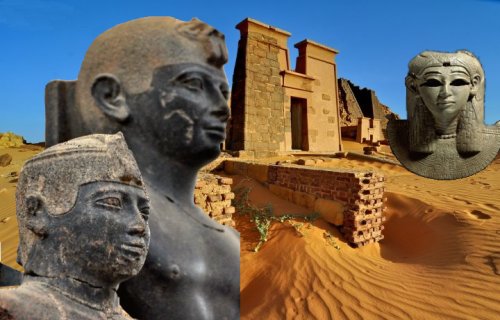
While the Nubian civilization and political organization inspired, initiated and influenced the first dynasties of Egyptian Pharaohs, an equally powerful civilization - called the Kingdom of Kush by the Egyptians - existed in Nubia, and persisted for more than 2000 years. Its capital was located in Kerma, in today's Northern Sudan, a town with sophisticated architecture, temples and fortifications. It is mainly the so-called Black Pharaohs of Kush who occupied and reunited all of Egypt and beyond who recently gained fame, as well as its reigning queens - the Kandakes - who personally participated in military expeditions and even led war against the Romans, gaining respect and concluding agreements by the mightiest powers of the time.
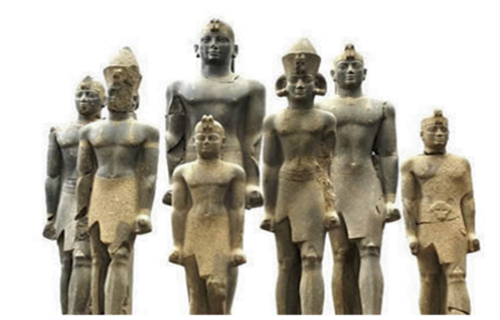
While the Nubian Pyramids are far less known than the Egyptian pyramids, there are roughly three times more - about 300 of them - in various burial sites in Central Nubia (today's Northern Sudan). Although they have unfortunately been vandalized by early European archaeologists and treasure hunters, their inscriptions give a quite accurate idea of the rulers of Ancient Nubia. Based on the information from Historians and Archaeologists, we have tried to assemble a list of the great Kushite kings (called Qore) and queens (the famous Kandakes), as well as influential personalities. Enjoy...
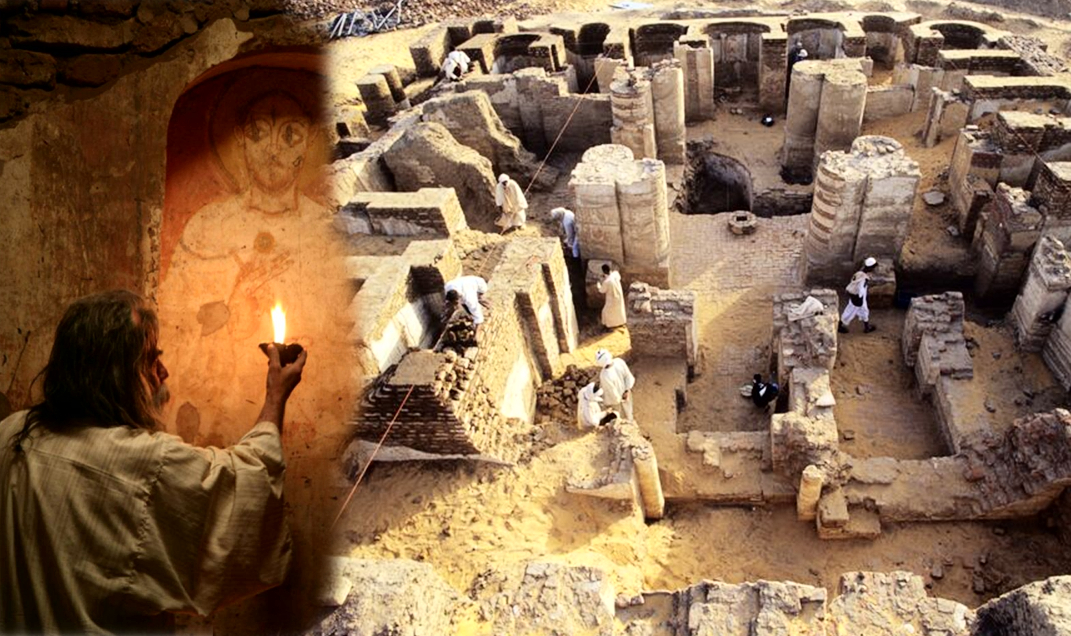
As a result of successive invasions of Egypt by external powers, the Nubian Kushite kingdom moved its capital further South, to Meroe. Finally, in the 5th century AD, it split into three kingdoms: Nobadia, Makuria and Alodia, that included the Nile Valley from Aswan (in today's Egypt) in the North to Kosti and Sennar in the South, including Omdurman and Khartoum. Around 600 AD the Nubians of these kingdoms converted to the Christian religion, and concluded a pact with Muslims who had conquered Egypt. It is only after the 12th century AD that Nubians gradually converted to Islam.
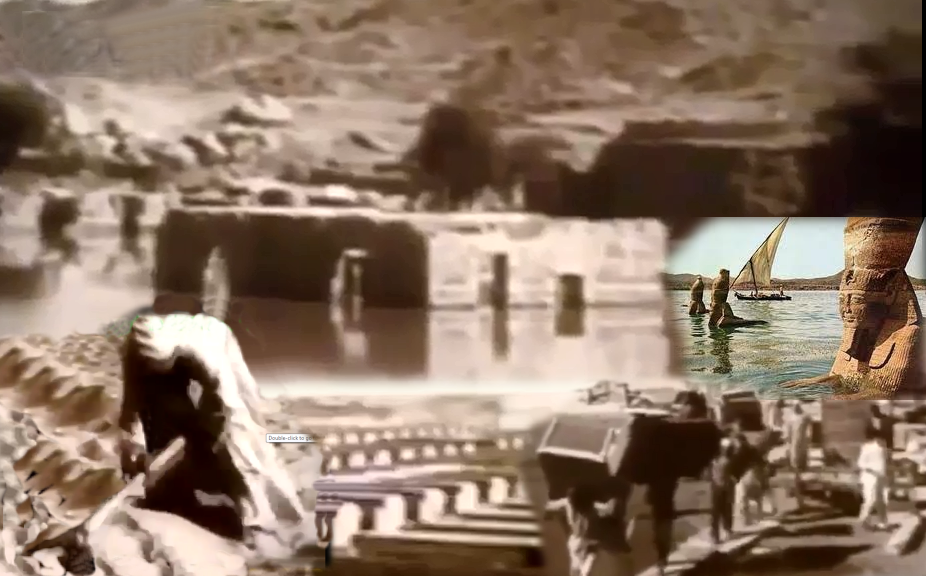
Nubia's glorious history suffered a setback in recent times. Since the begin of the 19th century, the British occupiers of Egypt and Sudan and succeeding governments wanted to benefit and decided the construction of several dams, which each time drowned several Nubian villages and displaced their population. Then came the separation of Sudan from Egypt, that cut the Nubian lands into two parts. The construction of the Aswan High Dam and Lake Nasser drowned further 49 villages, and many displaced Nubians were relocated in insalubrious desert villages without living and working opportunities. In Upper Nubia (Sudan) criminal fires destroyed further palm plantations, a source of living for the people.
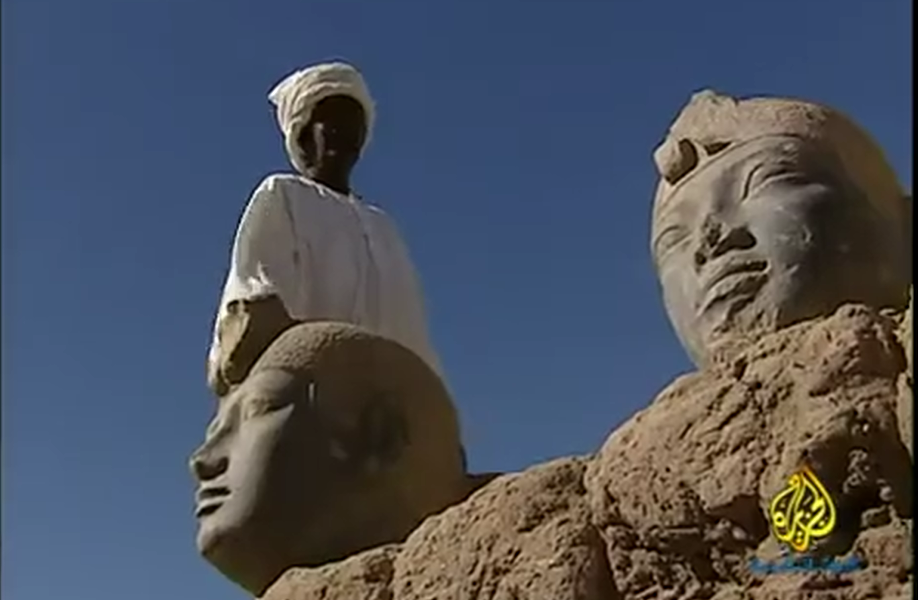
The uncovering of the noble history of Nubia is in great part owed to persisting efforts by various teams of archaeologists, who worked with devotion in a difficult environment to reveal Nubian history to the World - and to the Nubians themselves. Although archaeology is not surrounded by the aura of fame and potential reward as some other academic disciplines, and needs a lot of patience and dedicated work, archaeology is essential in revealing the evolution of Nubian civilization - which is the root of the civilization of all of us - and we need to pay tribute to these committed men and women who often work in the shadow.

Although the Nubian Elders accepted the sacrifice of "temporary" displacement as Lake Nasser was planned, they were misled and promised new houses, arable land, running water, electricity, refrigerators, schools and communal centers. At their arrival in the new locations most of them found cramped and unhealthy housing, mostly due to unscrupulous companies charged with the projects. Many Nubians died due to unsanitary conditions and contaminated water. Although the situation slightly improved, Nubians aspire to return to the shores of Lake Nasser, where there are wide unused lands, to live in conditions similar to the peaceful and self-sufficient life they enjoyed in Old Nubia. We wish their dream come true...